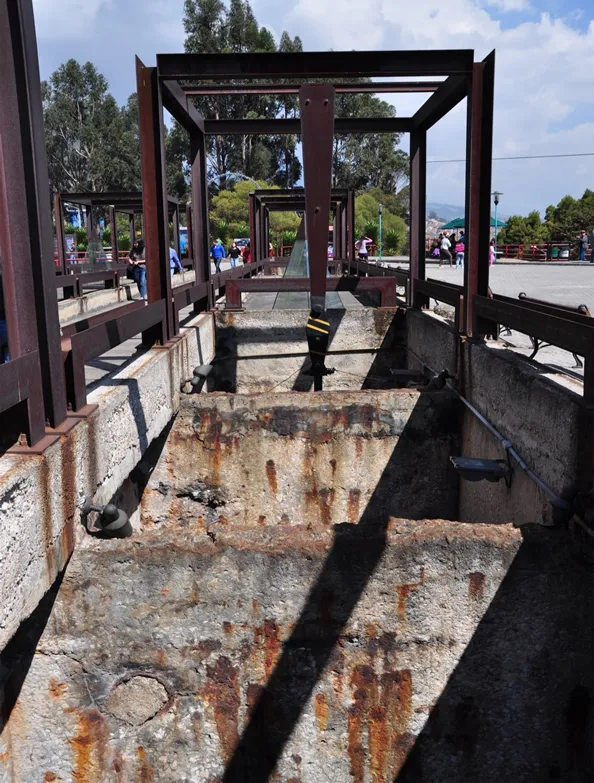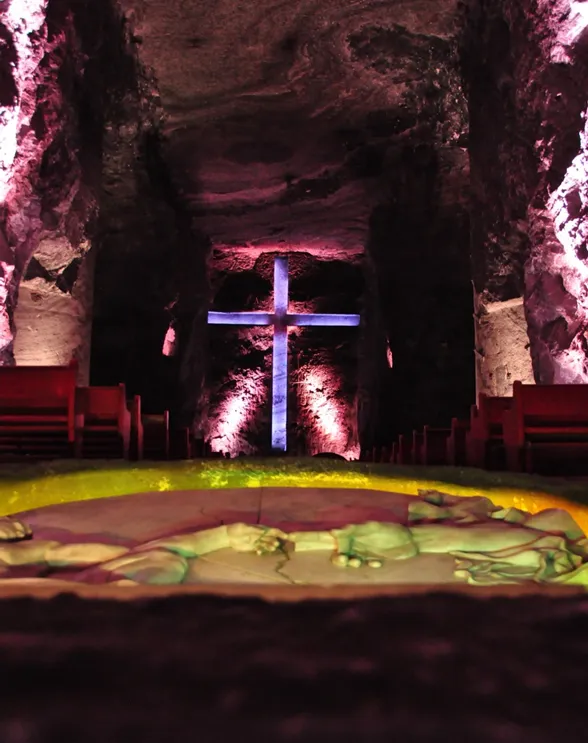
In 1960, when I had just graduated from high school, my father organized a trip to Bogotá, Colombia, by road, from Barquisimeto, Venezuela. It was a trip with two stopovers, one in San Cristóbal, a city on the border with Colombia and another stop in Bucaramanga, a city in the Colombian Andes. A couple of days after arriving in Bogotá, we made an excursion to the famous Salt Cathedral located in Zipaquirá, a small city 48 kilometers north of the capital, considered a religious architectural jewel, with a population at present of 190,000 inhabitants.

The history of this cathedral dates back to 1930, when the miners, who worked in the salt mines of this town, decided to build a chapel to perform their prayers; unfortunately, this chapel was closed to the public in 1992 for security reasons. It was 120 meters long, with a living area of 5500 square meters, and was erected in honor of the Virgen del Rosario de Guasa, patron saint of miners.
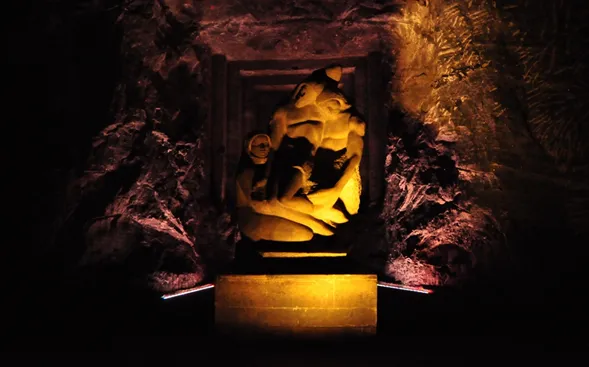
Fortunately, just three years later, in 1995, a magnificent church was inaugurated, whose architectural and artistic design is by the Bogota architect Roswell Garavito Rearl, with the calculations made by the Colombian engineer Jorge Enrique Castellano Reyes. The work was built 180 meters underground in the old salt mine, whose exploitation dates back to the early nineteenth century, in the “Salt Park of Zipaquirá”, on the Zipa hill at 2,652 meters above sea level. It is worth remembering that this mine is the largest salt rock reserve in the world.
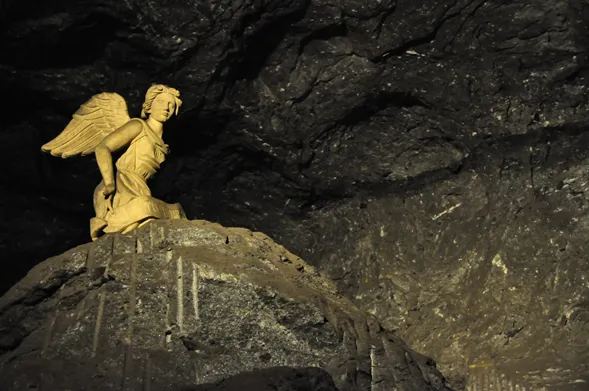
The Cathedral covers an extensive area of ten hectares, on three levels. To get to the church itself it is necessary to go through a tunnel 386 meters long and 13 meters high; once inside the mine it can be observed, thanks to the effect of colored lights, the Via Crucis made up of 14 stations, which represent the life of Jesus. On the other hand, you can see a large dome 11 meters high and 8 meters in diameter that symbolizes the union of Earth and Heaven. After traveling the Via Crucis, on the lower level you reach the cathedral proper, with its 120 meters long by 22 meters high, with access to three naves: the naves of birth and baptism, the naves of life and death and that of the resurrection, each with an altar. In the nave of the birth are the figures of the manger, made by the Italian sculptor Ludovico Consorti (1902-1979), in 1950, in sandstone rock, since the salt has too many impurities that do not allow the figures to be molded well, as explained to me by my brother-in-law Alfonso, who is mechanical engineer. The baptistery or "Salt Waterfall" represents the Jordan River, where Jesus of Nazareth was baptized. Walking through the ships we found stalactites due to the filtration of water.

The main altar, where the Eucharist is performed with its Greek Nazcar cross, supported by four huge columns of salt eight meters in diameter representing the four evangelists, can receive 8,000 faithful every Sunday for mass. In the middle of the Central Nave is the "Medallion of the creation of the world", brought from Palermo, Huila Department in Colombia, divided into parts due to its weight of three tons, sculpted in marble by the artists Carlos Enrique Rodríguez Arango (1949-) and Hugo García Corredor Villalobos between the years 1994 and 1996. Unfortunately, the ship of death was under restoration so it could not be visited by my relatives.
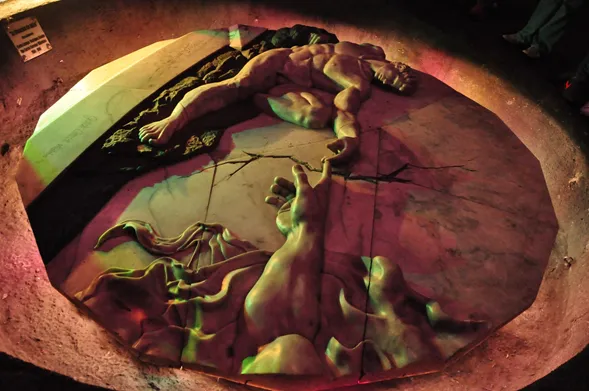
This religious work, which is part of the "Parque de la Sal" cultural complex, dedicated to mining, geology and natural resources, is considered one of the most notable architectural and artistic achievements of Colombian architecture. It has been given the title of "architectural jewel of modernity". It can be affirmed that its value, in addition to being religious and architectural, also has great cultural and environmental value. A unique place, Unesco heritage. It has even been nominated among the New Seven Wonders of the Modern World.
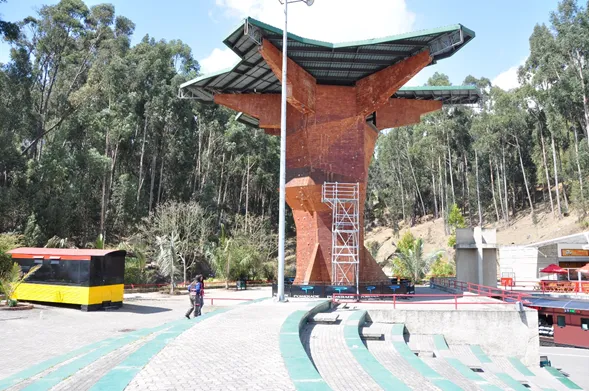
The route to visit this sacred place, "away from the madding crowd", from the everyday, invites to reflection and to an encounter with oneself: To get into the lowest level of the cruch you take barely an hour and I think it should be done with joy and great spiritual peace, in addition to the amazement at what man is capable of doing to worship his God.
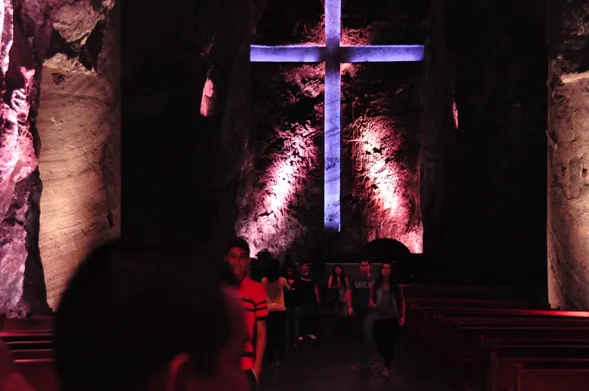
I must say that I am one of the lucky ones, because of my age, to have visited both churches at very different times. The photos that I present to you today were taken by my relatives who visited Zipaquirá in 2016, which I share with you with great affection.
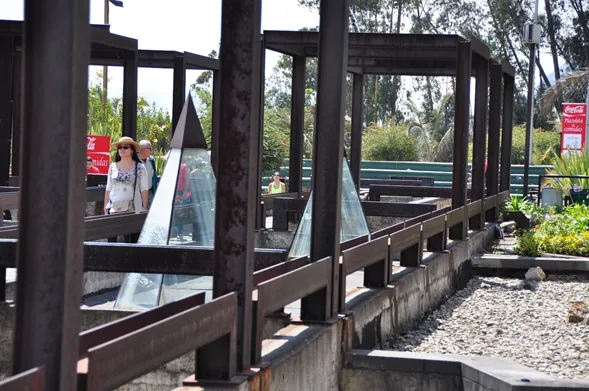
(Parte del proceso de las diferentes “cubetas” donde se decantaba la sal.Lozs primas, de origen sueco, se utilizaban para bajar la sal para la zona de la “Salmuera”). Foto familiar de @alfceli
References:
*Conoce todo sobre la Catedral de sal colombia, su historia y más: http://esculturasymonumentos.com/c-colombia/catedral-de-sal-colombia/
*Maravillas arquitectónicas. La catedral de Sal de Colombia que está bajo tierra:
https://www.lavanguardia.com/ocio/viajes/20190106/453929369679/catedral-sal-subterrenea-colombia.html


En 1960, estando yo recién graduado de bachiller, mi padre organizó un viaje a Bogotá, Colombia, por carretera, desde Barquisimeto, Venezuela. Fue un viaje con dos escalas, una en San Cristóbal, ciudad fronteriza con Colombia y otra parada en Bucaramanga, ciudad de la Cordillera de los Andes colombianos. Un par de días después de haber llegado a Bogotá, realizamos una excursión a la famosa Catedral de Sal ubicada en Zipaquirá, pequeña ciudad a 48 kilómetros al norte de la capital, considerada una joya arquitectónica religiosa, con una población en la actualidad de 190.000 habitantes.
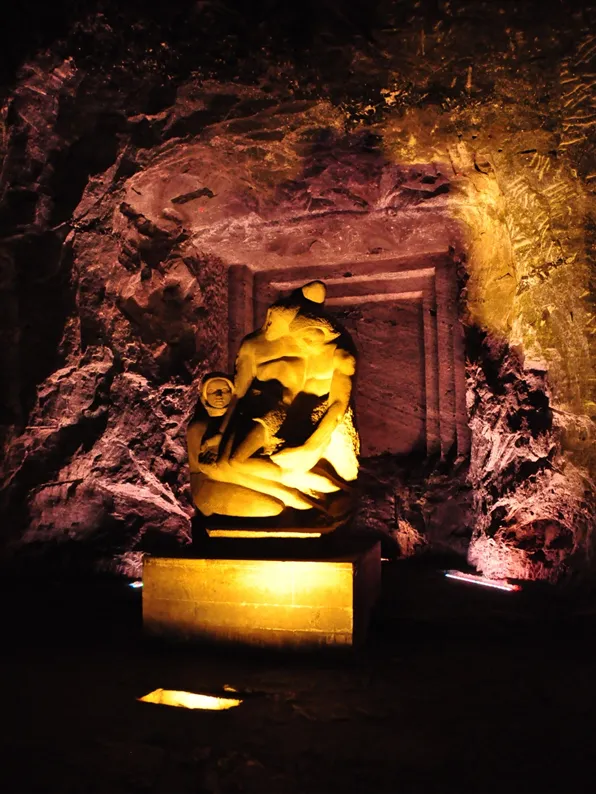
La historia de esta catedral se remonta a 1930, cuando los mineros, que trabajaban en las minas de sal de esta localidad, decidieron construir una capilla para realizar sus oraciones; lamentablemente, esta capilla fue cerrada al público en 1992 por razones de seguridad, tenía una longitud de 120 metros, con una superficie habitable de 5500 metros cuadrados y estaba erigida en honor a la Virgen del Rosario de Guasa, patrona de los mineros.
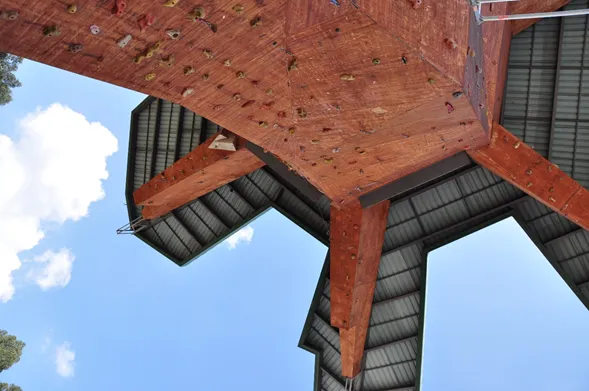
Afortunadamente, apenas tres años después, en 1995, se inauguró una magnífica iglesia, cuyo diseño arquitectónico y artístico es del arquitecto bogotano Roswell Garavito Rearl, con los cálculos realizados por el ingeniero colombiano Jorge Enrique Castellano Reyes. La obra fue construida a 180 metros bajo tierra en la antigua mina de sal, cuya explotación data de principios del siglo XIX, en el “Parque de la Sal de Zipaquirá”, en el cerro del Zipa a 2652 metros sobre el nivel del mar. Vale la pena recordar que esta mina es la mayor reserva de roca sal en el mundo.

La Catedral cubre una extensa área de diez hectáreas, en tres niveles: Para llegar a la iglesia propiamente dicha es menester recorrer un túnel de 386 metros de longitud y 13 metros de alto, una vez dentro de la mina se puede observar, gracias el efecto de luces de colores, el via crucis conformada por 14 estaciones, que representan la vida de Jesús. Por otra parte, se puede ver una gran cúpula de 11 metros de alto y 8 de diámetro que simboliza la unión de la Tierra y el Cielo.

Después de recorrer el via crucis, en el nivel inferior se llega a la catedral propiamente dicha, con sus 120 metros de largo por 22 de alto, con acceso a tres naves: la del nacimiento y bautismo, la de la vida y la muerte y la de la resurrección, cada una con un altar. En la nave del nacimiento se encuentran las figuras del pesebre, elaboradas por el artista italiano Ludovico Consorti, en 1950, en roca arenisca, pues la sal tiene demasiadas impurezas que no permiten moldear bien las figuras, según me explicó mi cuñado Alfonso, quien es ingeniero mecánico. El bautisterio o “Cascada de sal” representa el río Jordán, donde fuese bautizado Jesús de Nazaret. Caminando por las naves encontramos estalactitas debido a la filtración de agua.
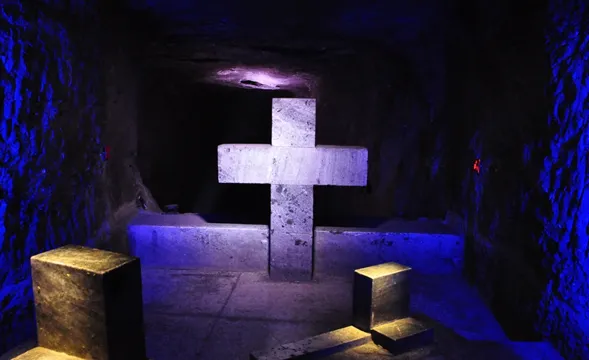
El altar mayor, donde se realiza la eucaristía con su cruz griega de Názcar, sostenido por cuatro enormes columnas de sal de ocho metros de diámetro que representan a los cuatro evangelistas, puede recibir a 8000 fieles cada domingo para la misa. En medio de la Nave Central se encuentra el “Medallón de la creación del mundo”, traído desde Palermo Huila, dividido en partes debido a su peso de tres toneladas, esculpido en mármol por los artistas Carlos Enrique Rodríguez Arango y Hugo García Corredor Villalobos entre los años 1994 y 1996. Lamentablemente, la nave de la muerte estaba en restauración por lo que no pudo ser visitada por mis familiares.
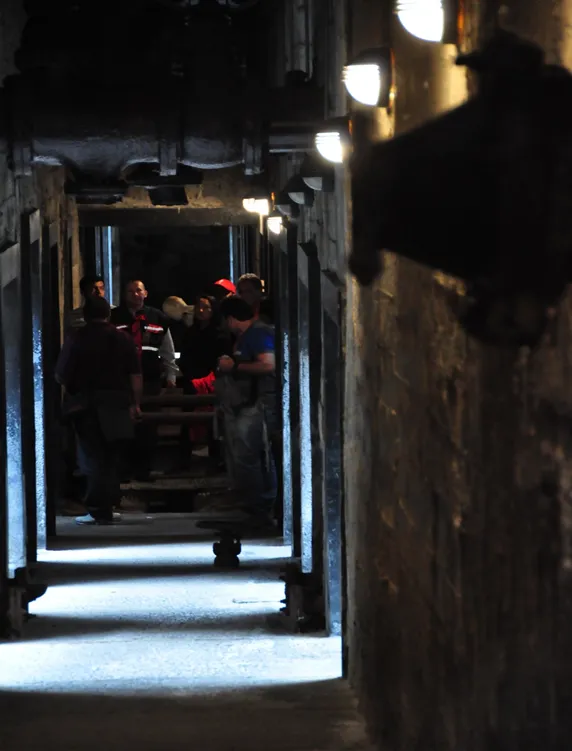
(Entrada al “Museo de la Salmuera” en el Parque de la Sal). Foto familiar de @alfceli
Esta obra de carácter religioso, que forma parte del complejo cultural “Parque de la Sal”, dedicado a la minería, la geología y los recursos naturales, es considerada como uno de los logros arquitectónicos y artísticos más notables de la arquitectura colombiana, por ello se le ha dado el título de “joya arquitectónica de la modernidad”. Puede afirmarse que su valor, además de ser religioso y arquitectónico, también tiene un gran valor cultural y ambiental. Un lugar único, patrimonio de la Unesco. Incluso se le ha nominado entre las nuevas siete maravillas del mundo moderno.
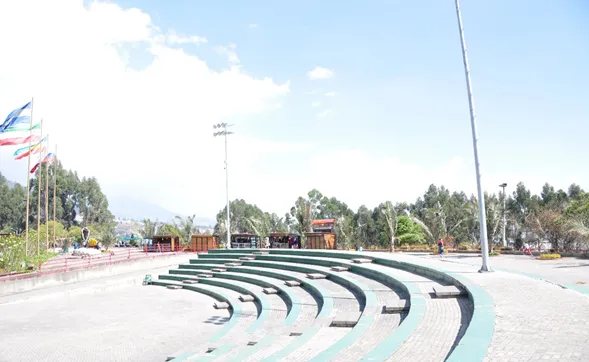
El recorrido para visitar este lugar sagrado, "alejado del mundanal ruido", de lo cotidiano, que invita a la reflexión y al encuentro con uno mismo, es de apenas una hora y debe hacerse con alegría y gran paz espiritual, además del asombro que produce lo que el hombre es capaz de hacer para adorar a su Dios.

Debo decir que soy de los afortunados, debido a mi edad, de haber visitado ambas iglesias en épocas muy distintas. Las fotos que les presento hoy, fueron tomadas por mis familiares que visitaron a Zipaquirá en 2016, que las comparto con ustedes con mucho cariño.
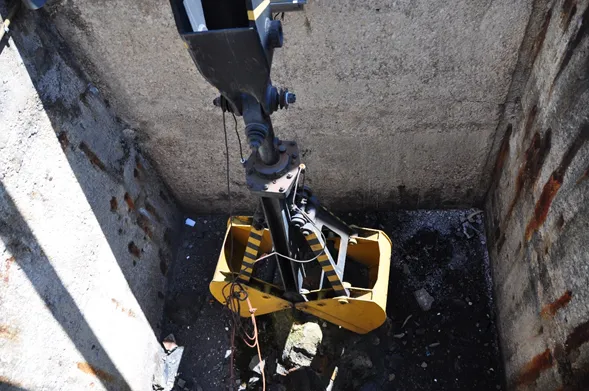
References:
*Conoce todo sobre la Catedral de sal colombia, su historia y más: http://esculturasymonumentos.com/c-colombia/catedral-de-sal-colombia/
*Maravillas arquitectónicas. La catedral de Sal de Colombia que está bajo tierra:
https://www.lavanguardia.com/ocio/viajes/20190106/453929369679/catedral-sal-subterrenea-colombia.html
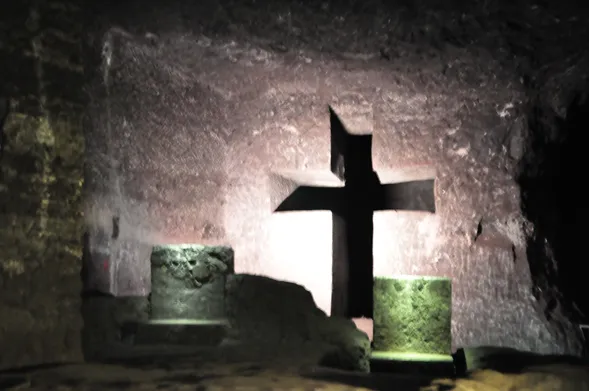
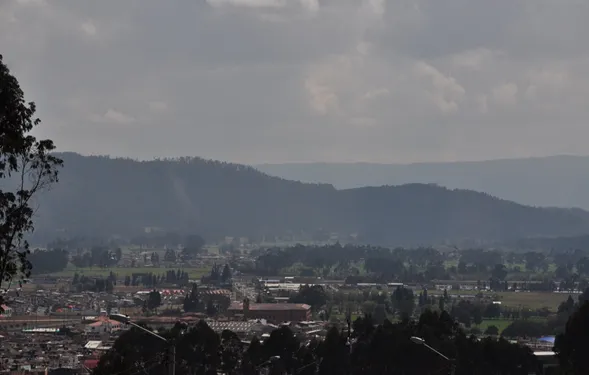
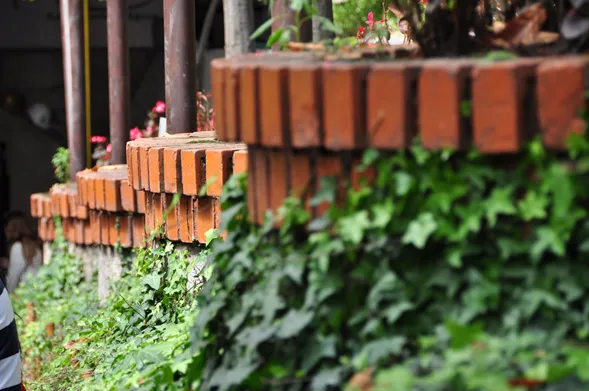
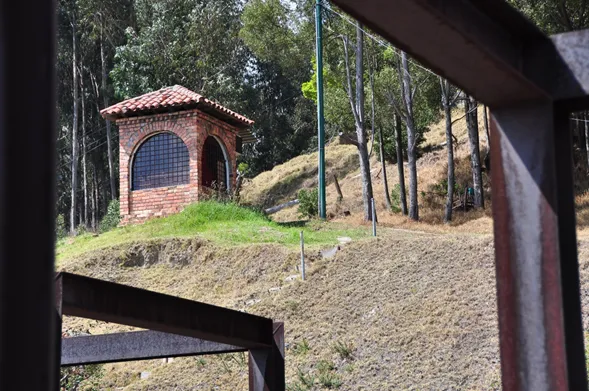
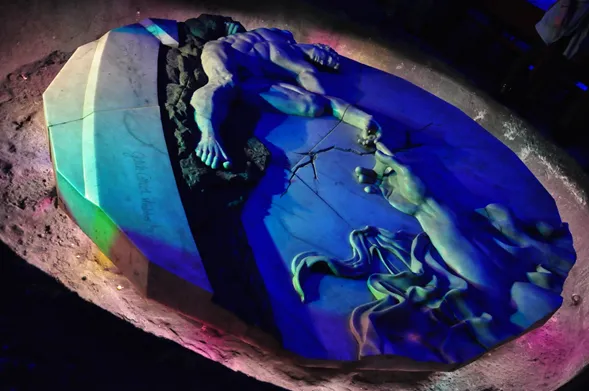
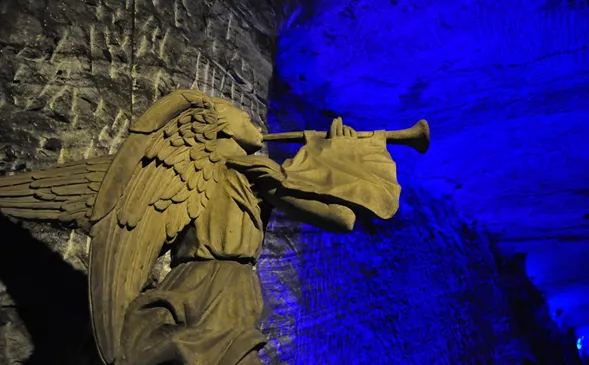
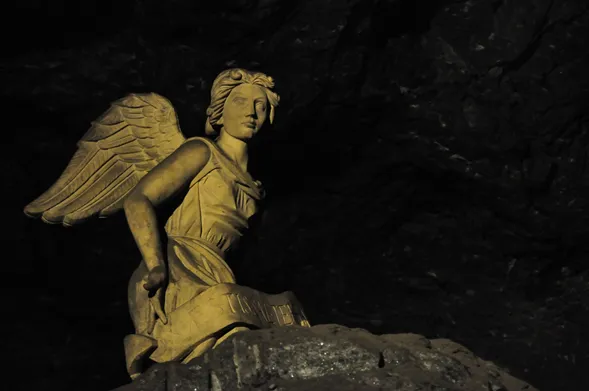

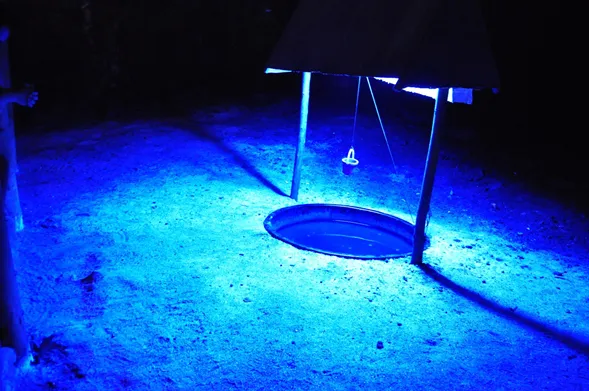
Family photo by @alfceli. (Pozo por donde se extrae el agua super salada de la mina). Foto familiar de @alfceli
